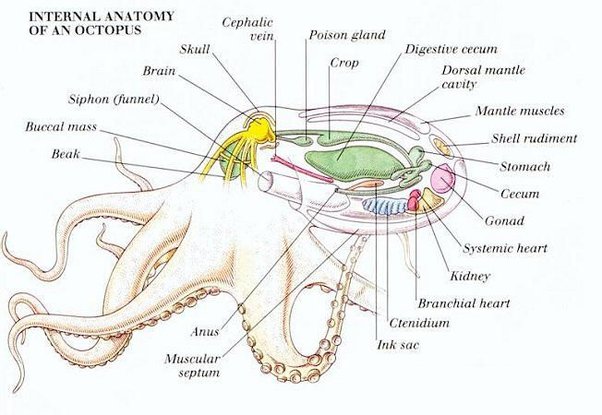You may be wondering how an Octopus can have three hearts and nine brains. Did you know that Octopuses have 280 suckers? This article will answer all your questions about the octopus’s circulatory system. Keep reading for more interesting facts about this fascinating creature. In addition to the three main heart types, octopuses also have a branchial heart and a single systemic heart.
How Many Hearts Does An Octopus Have?
Octopus has three hearts
A solitary octopus has three heartbeats, two of them branchial and one of them systemic. The systemic heart pumps blood throughout the body, while the branchial hearts pump deoxygenated blood from the gills back to the systemic heart. The branchial heart is smaller than the systemic heart, and its main job is to keep blood clean before it can return to the larger systemic heart.
The three hearts of the octopus provide oxygenated blood to the body. There are two branchial hearts, and one is paired with the other. The gills, in turn, pump blood through the octopus’s gills. As the body moves through water, the branchial hearts stop beating, allowing the larger heart to keep the body moving. The heart is responsible for the breathing process, and it also produces the octopus’s characteristic “claws” – bumps and squidlike features.
Octopus has nine brains
There are many things that make octopuses unique and intelligent. First, they have nine brains! According to Biogeo Planet, octopuses were the most intelligent organisms in the universe until recent years. Each of its eight brains contributes to the various arm motions, while the middle brain is responsible for various activities. This article will explain more about these unusual creatures. Listed below are some fascinating facts about these creatures and why they are so valuable.
In addition to nine brains, octopuses have three hearts and blue blood. These organs help the octopus to move and fight. Moreover, octopuses have eight arms, with each arm controlled by a cluster of neurons. As a result, these creatures can carry out complex tasks and remain undetected. And because octopuses have so many brains, they are highly intelligent and adaptable to changing environments.
Octopus has 280 suckers
It may seem incredible, but an adult Pacific octopus has 280 suckers on each arm! Each one can be as large as a quarter, so they can be used for a variety of functions! These suckers are also used for smell, taste, and gripping. Adult female octopuses can have up to 280 suckers per arm! Octopuses are known to have many specialized taste and touch receptors, and they are generalist foragers. The suckers are so useful to the octopus, that they often leave their dead skeletons at the entrance of their den.
The suckers on an octopus’ arm are incredibly sensitive. Each one is loaded with thousands of chemical receptors. They help the octopus grope for food in crevices and nooks, and can detect a slight touch. Its nine brains and central nervous system are located in each arm. The octopus has 280 suckers on each arm, and each one is controlled individually by the octopus.
Octopus has a closed circulatory system
The heart of an octopus is called a systemic heart. The systemic heart pumps oxygenated blood throughout the octopus’ body. This system is very similar to that of a human. Octopuses have three heart valves, two branchial and one systemic. The branchial heart pumps pure blood containing oxygen to the remote tissues and returns to the systemic heart, where it is pressurized again.
The main heart of an octopus has a closed circulatory system, and it works hard to pump the blood through its body. However, there are instances when the main heart fails to pump enough blood through the body, so the branchial heart acts as additional pumps. Since an octopus prefers to float and chill, active swimming could lead to damage to its main heart. If this happens, the animal may develop a condition known as Takotsubo cardiomyopathy, which gets its name from the pot used to trap an octopus
